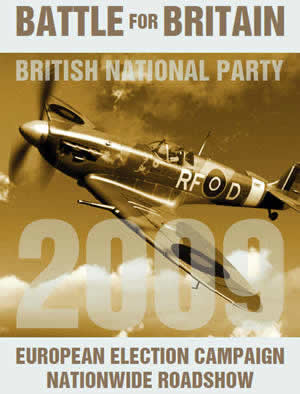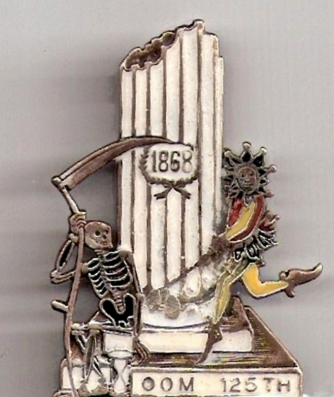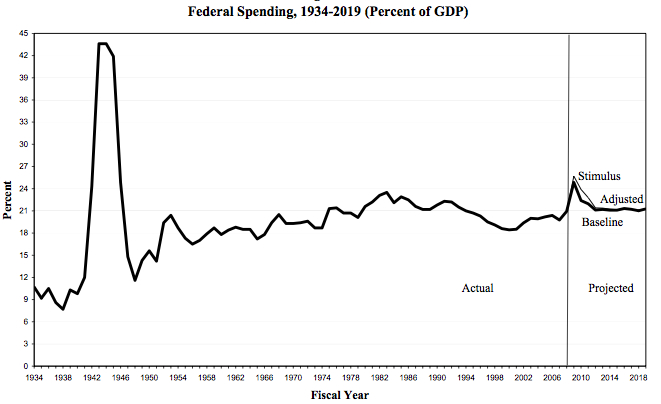In this 7 1/2 minute video Hans Rosling maps the relationship between life expectancy, GDP, and sexual health and rights over 300 years of Swedish history:
Found at GapMinder.
In this 7 1/2 minute video Hans Rosling maps the relationship between life expectancy, GDP, and sexual health and rights over 300 years of Swedish history:
Found at GapMinder.
Hyperion submitted a great illustration of cultural change. Today, cigarette smoking is illegal in most public places, but there was a time in which cigarette smoking was normative instead of deviant. This radar analysis instrument, in use through the 1950s through 1980s, includes a built-in cigarette lighter and ashtray:

More on this and like instruments here.
Thanks Hyperion!
Laura W. sent us a link to a review of sex education in the U.K. that featured a three minute video. The video is a clip from a 1917 film, called “Whatsoever a Man Soweth,” encouraging Canadian soldiers to refrain from having sex with prostitutes. It was important for states to keep their soldiers from hiring prostitutes because soldiers filled up the sick bay with sexually transmitted infections that, during World War I, were not easily cured with antibiotics. Watch it here.
Also in soldiers and STIs: “Bad” women as disease vectors.
Brady sent me a link to a story in the Times Online about a poster put out by the British National Party, a right-wing anti-immigrant political party. Here’s the poster (found at the BNP website):

They’re clearly trying to connect efforts to defend Britain during World War II to the idea of a modern “battle for Britain,” which this time is against immigrants. However, they missed a detail when the chose the image for their poster, according to the Times story:
[The plane] could be clearly identified by its RF marking as belonging to 303 Squadron, an expatriate Polish unit, even though the BNP campaigns against immigration from Eastern Europe.
The BNP claims they knew it all along and did it on purpose; others believe they’re just trying to cover an incident that they find embarrassing.
Regardless, it brings up interesting questions about nationhood and definitions of who can be included in a country’s idea of its history. In the imagining of the BNP, would immigrants’ contributions be erased? Would they be acknowledged, but only as something that was appropriate and welcome in the past? After all, one of the very groups they’re vilifying played a role in defending Britain during the exact era that the BNP is trying to symbolically connect itself to. I suspect they might try to make an argument that the ex-pat Polish fighters were involuntary and temporary refugees that were being protected by Britain during a time of warfare and were in fact fighting to retake their own country, which is different than permanent immigrants who take British jobs and mess up the culture and whatnot, but that’s just a guess.
Of course, this isn’t something unique to the BNP; nativist groups everywhere face the problem of having to erase or explain away the contributions of groups they’re trying to exclude from citizenship.
Thanks for the tip, Brady!
Racism is ingrained in the Midwest; we’ve normalized it. Take, for example, my earlier post on Tony Zirkle, the  Hoosier Republican congressional candidate who spoke at a dinner honoring Hitler’s birthday. (He also publicly advocated for racial segregation.) Zirkle lost, of course, but the fact that he had no problem publicly stating his racism – without thinking that others would object – shows just how commonplace overt racism can be here.
Hoosier Republican congressional candidate who spoke at a dinner honoring Hitler’s birthday. (He also publicly advocated for racial segregation.) Zirkle lost, of course, but the fact that he had no problem publicly stating his racism – without thinking that others would object – shows just how commonplace overt racism can be here.
One of the best examples is the “U-Washee” in Richmond, Indiana. The laundromat is, literally, built on racist stereotypes of Chinese people and no one gives it a passing glance. It’s 1940’s era cartoon stereotype mascot, what Margaret Cho calls “feng shui hong kong fooey font,” and the extra “ee”s at the end of words in the business’s name and posted notices all combine to form one hellish timewarp into a past America most areas have forgotten but we tend to accept as typical – and no one utters a peep.
While Americans tend to think of the South when the subject of racism comes up, the Midwest is no stranger to our own brand of anti-minority bigotry. The Klu Klux Klan was headquartered in Indiana for many years. The former national Grand Dragon, D.C. Stephenson‘s, home is blocks from mine; he more or less ran our state government in the 1920’s. One July 1923 Klan rally hosted by Stephenson in nearby Kokomo drew an estimated 50,000 people.
Bigotry flourished around the nation thanks to Stephenson’s efforts. He influenced governors, state legislators and congressmen. It wasn’t until he abducted, forcibly intoxicated, assaulted and raped a white neighbor woman who later died that he became a societal pariah. (One witness said her body looked like she’d “been chewed by a cannibal.” He was sentenced to life in prison.) No one knows if there were any African-American victims too; they were never considered.
Racism is part of our heritage too.
The reader who sent in these photos described his encounter at the laundromat. While he was taking the pictures, another customer walked up to him to ask, “You’re not from around here, are you?” It wasn’t meant in a threatening manner, but more of a bemused “Well, this is Indiana…” general excuse.
It’s often said that one thing Hoosiers fear most is change. We use it as a crutch to continue any bad behaviors we want to tacitly condone. Smoking rate too high? Our citizens are stressed over the economy. Rate of overweight people per capita one of the highest in the nation? It’s the diet. No protections whatsoever for gays and lesbians? These type of things take time.
Apparently almost 50 years isn’t quite enough.
Another interesting aspect to this story is the financial angle. The unemployment rate in Richmond is 9.8%. Very few small businesses are succeeding. The “U-Washee” is entirely built around this racist theme and to remove the associations would cost a small fortune – new signage inside and out, a new name, changed business records with resultant legal fees, etc.
The owner is an elderly white man who’s barely making ends meet as energy costs and business expenses have skyrocketed while income has stayed the same. He’ll wash, dry and fold your clothes for you for $1 per pound. He provides a service the community needs. How do you wash your clothes if you don’t have a car to drive miles to another laundromat? There are three* other laundromats in the city of 40,000 people.
How does the community deal with the issue without cutting off their nose to spite their face in these desperate economic times?
Confronting racism is never an easy task. Adding in poverty, employment and basic living issues only compounds the problem. If no one is complaining, why stir up trouble?
0.8% of Richmond’s population is Asian according to the US Census Bureau. They’re not complaining. The citizens obviously aren’t either. A quick Google search for “U Washee Richmond” shows exactly one relevant link – a listing for the pay phone. No other blog posts. No outrage in the newspaper. No protests outside the business.
What right do I have to interject myself in their affairs?
I’ve not reached out to the “U-Washee” before posting these pictures and commentary. I plan to do it though, because someone has to speak up. I won’t demand or threaten. My goal is to help the owner move his business past the anti-Chinese racist stereotypes and not to shut the place down.
Someone has to speak up. Someone has to be first and break the cycle of complacency – the “I’m better than those poor deluded people” theory that too often excuses the continuation of prejudices and vices. Someone has to speak up.
Otherwise this stain will never wash away.
*Commenter AWB has pointed out that two laundries I thought were closed are open. I corrected the number of laundries in the town.
—————————-
Bil Browning is a long-time LGBT activist and writer. He is the co-owner and Editor-In-Chief of The Bilerico Project – an LGBT political blog recently named one of four “must reads” by the Washington Post. He and his partner, Jerame Davis, live with their teenage daughter in Indianapolis, Indiana. We asked Bil if we could reproduce this post from his blog and he said “yes.”
If you would like to write a post for Sociological Images, please see our Guidelines for Guest Bloggers.
In Race, Ethnicity, and Sexuality, Joane Nagel talks about the role that the intersections between ethnicity and sexuality play in nationalist projects–that is, how they are used as groups define who is and isn’t part of the entity defined as “the nation.” Those who are part of the nation are part of “us,” and those outside it are the Other. She brings up the example of Nazi Germany. Clearly ethnicity played a huge part in definitions of nationhood as the Nazis saw it. But as Nagel points out, it went beyond that; individuals were also included or excluded from membership based on other characteristics, including sexuality. Specifically, homosexuals were marked as unworthy of inclusion and were also sent to concentration camps.
This image, found at The Pink Triangle, illustrates the intersection ethnicity and various categories, including sexuality. It shows the various markers Nazis used to identify prisoners.

The bottom row of seven triangles clearly represents different categories of Jews. The fifth column of triangles (they look tan but they were pink) identified homosexuals. The third column (blue) was for immigrants. I believe the first column (red) was for political dissenters, but I’m not certain. We see other specified groups of Jews in the three partly-yellow triangles at the bottom, as well as triangles for Poles and Czechs. I don’t know enough German to figure the others out.
It’s a great example of a nationalist project: we can visibly see here the clear effort to define some groups as Others and the way that both ethnicity and sexuality (and the intersections) can be an important part of that, and even mark individuals as multiply stigmatized.
UPDATE: In comments philoserine and xac offered translations. Here’s xac’s:
[Columns]
red: political
green: professional criminal
blue: emigrant
purple: Jehovah’s Witnesses
pink: homosexual
black: work-shy Reich (not 100% sure wether the meaning here is “rich” or “member of the Third Reich” – more likely the last one though)
black: work-shy
[I thought I read somewhere that black might stand for antisocial, so maybe work-shy was how they defined that?]
[Rows]
1. row (triangles) base colour
2. row: label for reoffenders
3. row: penal camp
4. row: jews
5. row:
yellow triangle/black bordered triangle: jewish race desecrator
red circle with white border: under suspicion to escape
grey ring: ?? prisoner
6. row: left: Example: political jew, reoffender, penal camp
middle: special campaign Wehrmacht (?)
7. row: Pole
Czech
Thanks!
And Zeitzeuge says that “Special campaign Wehrmacht is a deserter from the Wehrmacht.”
Way back in 1703, French settlers in Mobile, Alabama – at the time, the capital of French Louisiana and not much more than a tiny settlement attached to Fort Louis de la Mobile – decided to celebrate Shrove Tuesday with a feast and a party. Over the next few years, the celebrations grew more elaborate, with the first known parade taking place in 1711: the Boeuf Gras (“fatted ox”) society put together a large papier mache cow’s head and rolled it through town on a cart, which I’m sure made a lot of sense at the time.
(It is at this point that native Mobilians, like myself, like to point out that New Orleans wasn’t even founded until 1718, and that New Orleans’ oldest continually-parading organization, the Mistick Krewe of Comus, was founded by six guys from Mobile. Ahem.)
And so today we celebrate Fat Tuesday – the last hurrah before Lent – by dressing up in funny clothes, drinking to excess, dancing in the streets, and hurling moonpies at each other. To celebrate, I thought I’d share an interesting symbol and recommend an excellent documentary film on Mobile Mardi Gras, director Margaret Brown’s The Order of Myths.

What we have here is Folly chasing Death around a broken Ionic column, while whacking Death with gilded pig bladders; seeing as how during Mardi Gras the normal social order is overturned, why not the natural order as well? Here’s a similar image from a float:

To me, these images sum up a lot of what’s great about Mardi Gras: it’s a finger in the eye of mortality and a celebration of a kind of genial lunacy. But what about that Ionic column? Well, the decoding gets a little stickier there.
I’ve heard a couple of different explanations: one is that the column represents time, the other that it represents the Confederacy or the Old South more generally. It gets a little more complicated when you look at it in context: this particular image is the emblem float of the Order of Myths, and is pulled by donkeys mules and lit by gaslight lamps – which are carried by young African-American men – in the same manner it has been since the founding of the organization shortly after the Civil War. Mobile’s mystic societies, you see, remain firmly segregated, which brings me to Margaret Brown’s excellent film.
Brown – whose first full-length documentary, Be Here To Love Me, is an excellent if crushingly depressing film about Texas songwriter Townes Van Zandt – is a fellow Mobile expat, and her film examines the complexities of race, class, and collective memory in Mobile as embodied in the 2007 Mardi Gras season. She focuses primarily on the two parallel Mardi Gras courts and documents some tentative steps toward integrating the two. I won’t say much more, for fear of spoiling the film for you, except to remark that the past is very much present in the film, in ways that both William Faulkner and Pierre Bourdieu would appreciate. And I’d also add that Brown eschews a heavy-handed or didactic approach in favor of laying the situation out for the viewer and letting them draw their own conclusions, with a few subtle editorial decisions and one late-in-the-game revelation that throws much of the previous hour and a half into a new and intriguing light. Here’s a trailer for the film:
My only real criticism of The Order of Myths is that Brown focuses primarily on the Mardi Gras elite – a little of Joe Cain Day (held the Sunday before Fat Tuesday and known as “the People’s Parade” because pretty much anybody can be in it if they can get a slot) would have gone a long way: class in Mobile is not quite coterminous with race, after all. There’s a lot more to Mobile Mardi Gras than the royal courts, and we don’t really get to see much of that. Similarly, the school featured in the film is more integrated than you’d think, as are the crowds along the parade routes, given what’s shown in the film.
But these are relatively minor points – by and large, Brown tackles the subject with a keen and incisive eye, and I’d highly recommend it to anyone teaching a class on race in the United States.
———————-
For the record, the title of the post translates as “time flies, remember you are mortal, party on.”
Considering the graph below comparing the percent of GDP spent for economic stimulus during The Great Depression (1940s) and today (from the Tax Policy Center), Ezra Klein concludes:
We’re spending a lot right now, but this is hardly the most aggressive fiscal experiment in history.

Contrast that summation with this ad from the American Issues Project:
[youtube]https://www.youtube.com/watch?v=eZ_Chroi4oc[/youtube]
This is what sociologists call a framing war. Is the economic stimulus big or small? You can make arguments either way, and people will. The question is: Which frame will resonate more with (which members of) the American public? We’ll have to wait and see.
(Via Alas A Blog.)
Lisa Wade, PhD is an Associate Professor at Tulane University. She is the author of American Hookup, a book about college sexual culture; a textbook about gender; and a forthcoming introductory text: Terrible Magnificent Sociology. You can follow her on Twitter and Instagram.